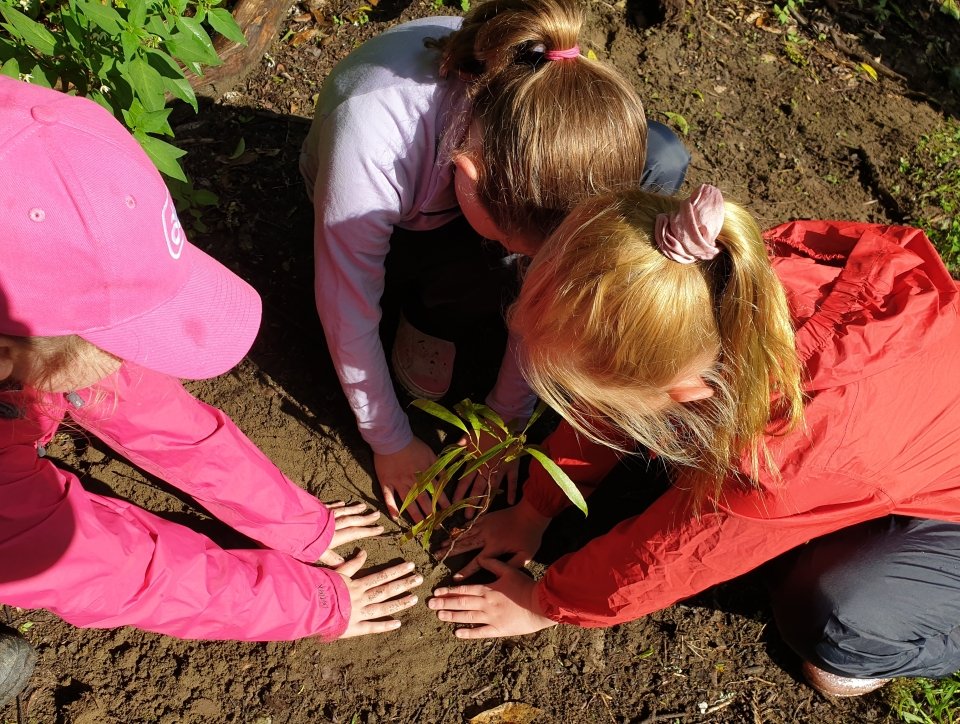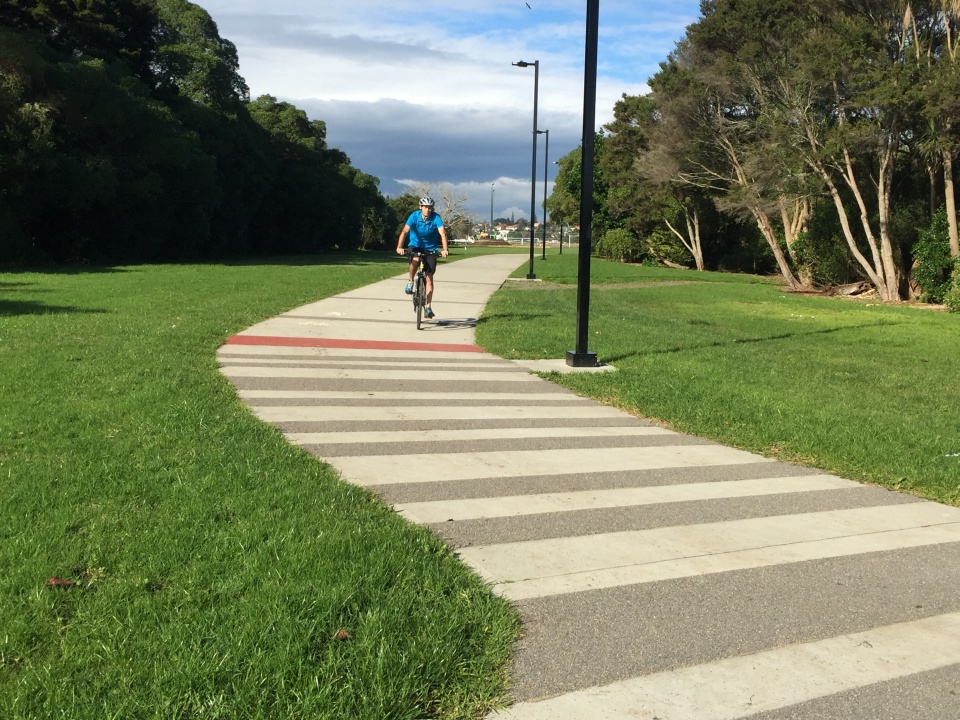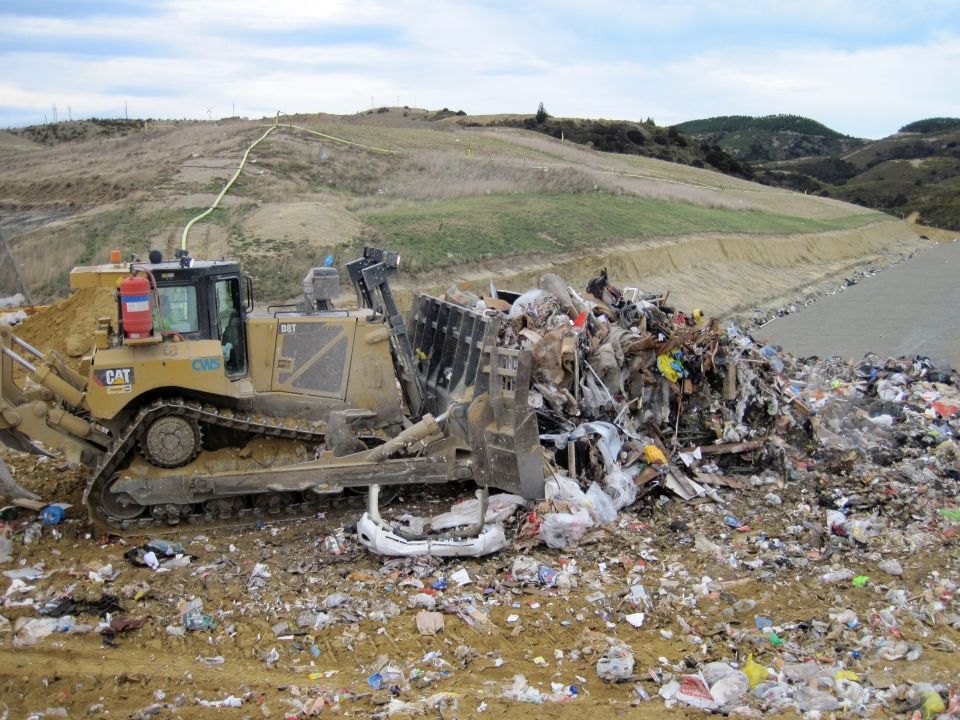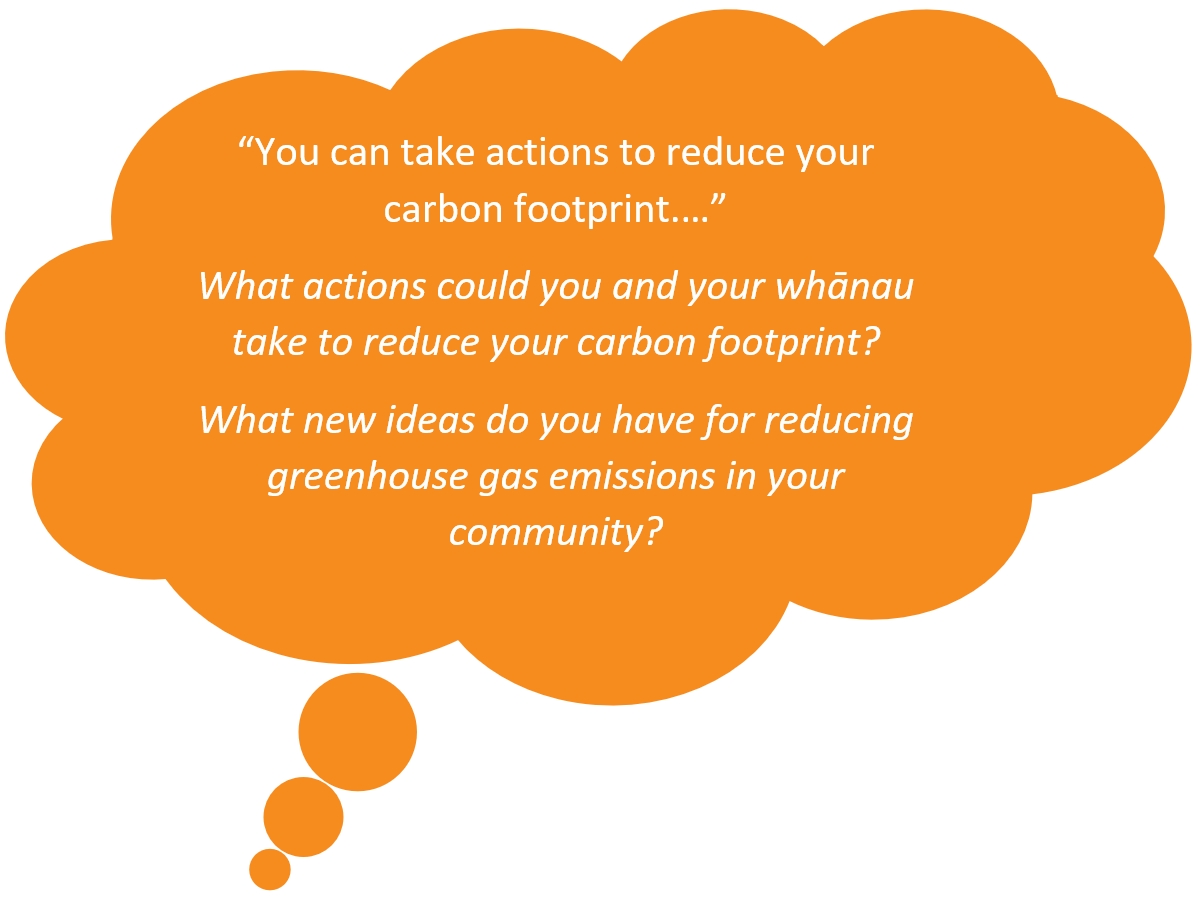You can contact LEARNZ, part of CORE Education, at:
Postal Address:
PO Box 13 678,
Christchurch 8141,
New Zealand

We can all take actions to reduce our greenhouse gas emissions and adapt to the impacts of climate change.
Here are some examples of free or low-cost actions you can take every day. Share them with your whānau, friends and community — together we can make a big difference.
A carbon footprint is the total amount of greenhouse gas emissions that come from the production, use and end-of-life of a product or service. It includes carbon dioxide — the gas most commonly emitted by humans — and others, including methane, nitrous oxide, and fluorinated gases, which trap heat in the atmosphere, causing global warming.
Usually, the bulk of a person's carbon footprint will come from transportation, housing and food.
If you know where your greenhouse gas emissions are coming from, you can take actions that have the biggest impacts in reducing your carbon footprint. By researching information from reliable sources, you can gain an understanding and make informed choices to reduce your own carbon footprint. Websites like the Ministry for the Environment have some useful tips, which are summarized below:
The transport sector contributes 19 percent of New Zealand’s total greenhouse gas emissions.

Greenhouse gas emissions are produced when we use electricity and gas. Aotearoa has a high level of renewable electricity production, but some of our energy is supplied by burning gas to generate electricity. Some people also use gas for cooking and water heating.
For more ideas see the Genless website.
Meat and milk production creates more greenhouse gas emissions than the production of fruit, vegetables and cereals. It also requires more water. Farming uses around 30 per cent of the world’s land area. It is one of the main reasons for clearing forest, particularly in the Amazon.
Actions you can take:
When you buy things from overseas you increase your carbon-footprint. Those items had to be transported, often thousands of kilometres which requires a lot of fuel and emits a lot of carbon dioxide. When you buy local food or products, you are also helping our economy and local producers.
Actions you can take:
All products require energy and materials to be made, packaged, transported, and sold. Reducing how much you buy is good for the environment and your parents’ budget!

Reduce
Reuse
Recycle
In Aotearoa, forests offset nearly 30 percent of our greenhouse gas emissions. A regenerating native forest can remove more than 8 tonnes of carbon dioxide per hectare per year from the atmosphere over its first 50 years.
Studies have shown that coastal vegetation can reduce erosion. It can also reduce the impact of waves and floods.
Trees provide shade which has a cooling effect in towns and cities. When placed around buildings they can cut electricity used for cooling in summer.
Actions you can take:
Learn about what is happening in your region now and what could happen in the future. If you live in or are planning to move to a coastal area, it is important to consider the impacts future sea level rise will have on coastal hazards such as erosion and flooding.
Visit the Get Ready website for more information.

Climate change is likely to have an impact on our water resources. Water supply may change due to changes in temperature and rainfall patterns.
Water demand is likely to increase during the summer months as temperatures rise.
Actions you or your parents can take
Complete the What Can We Do quiz
> Discover more about climate change in Aotearoa